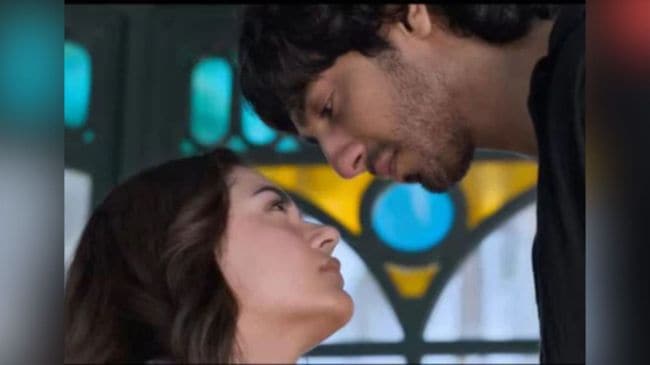Opinion Saiyaara is flawed. But its old-fashioned romance is what we need
It is a film with zero fights, zero hero-entry shots, and zero jingoism. The film's success has to do with watching romance on the big screen, with two charismatic young actors owning the film.
 Some things need not be “made new” after all — two people, one umbrella and a rain-soaked night; two people, mustard fields and a mandolin (File Photo)
Some things need not be “made new” after all — two people, one umbrella and a rain-soaked night; two people, mustard fields and a mandolin (File Photo) Saiyaara — the recent film that clocked in Rs 100 crore in under four days, broke Bollywood’s dry spell, and supposedly brought romance back to the screens — falls short at several levels.
The film is a love story about a 22-year-old writer dealing with Alzheimer’s. Neurologists say this is extremely rare, with early onset Alzheimer’s generally not happening before 40. Then there is the depiction of Alzheimer’s itself — the film liberally shows it as a broad set of dissociative disorders laced with an unhealthy dose of Bollywood-style melodrama.
But suspension of disbelief is central to the Indian film watching experience. Movies try to draw us in with emotion and music, and we surrender. Saiyaara fails on these fronts too — the emotions are one-tone and the music is derivative and unremarkable to the point that you cannot tell one song apart from another.
But then, the film seems to be striking a chord. Some people are even breaking down in theatres, social media is all praise, and ticket sales are increasing. That is a feat of sorts for a film with two newcomers in the lead: Aneet Padda and Ahaan Pandey.
What explains the appeal? Perhaps it has to do with watching romance on the big screen, with two charismatic young actors owning the film.
Indian film watchers have always had a massive appetite for romance. The 1950s saw Raj Kapoor-Nargis and Guru Dutt classics. In 1978, K Balachander made Maro Charitra, the doomed epic romance where Kamal Haasan and Saritha jump off a cliff at the end of the film. The ’80s gave us Yash Chopra’s Chandni. The ’90s were defined by romance: Dilwale Dulhania Le Jayenge, Roja, Bombay. The early 2000s saw Alaipayuthey, a simple story asking a fundamentally difficult question — will our parents agree if we choose our own partners? There was also Veer Zaara around the same time.
The 2010s built on the romantic template, cutting the chaff and stripping the gloss to asking us more probing questions. Nagraj Manjule’s Sairaat and Pa Ranjith’s Pariyerum Perumal came as punches to the gut, showing the ugliness of our casteist society.
A romantic film, then, is never just romance. It signifies aspiration and escape — wanting to make a choice for yourself, wanting to transgress, wanting to escape before society comes crashing down.
It is also about fashioning a new kind of masculinity and demanding it as Shrayana Bhattacharya shows in her book Desperately Seeking Shah Rukh: India’s Lonely Young Women and the Search for Intimacy and Independence.
But a shift happened circa 2014-15. Since the big-ticket success of Baahubali, an epic period fantasy action film, the gears shifted towards action. Action slowly devolved into meaningless violence, with every subsequent big film mounted by big stars testing the appetite for gore.
The women slowly became peripheral and the distribution model took over. Big films meant big guns (man and machine), elaborate chase sequences, and quick cuts.
This also coincided with a larger shift to the attention economy — the framing popularised by American computer scientist and theorist Herbert Simon in the 1970s about the competition to capture limited attention.
Fifty years later, that is more pronounced than ever. We are over-stimulated, confused, and living through wars, unprecedented tech disruption and an impending climate disaster. In this landscape, some like writer Kyla Scanlon — who makes sense of the American economy through the Gen Z lens — argue that attention is the single-most valuable product currently.
“We’ve moved from an economy where attention supports other forms of value creation to one where attention is value creation,” she writes.
The point of this little theory detour is to say that films are not our primary sources of entertainment or grounds for thought. They are competing with a YouTube video, a reel, an image, a tweet.
It would be practical to see them as just distribution vehicles. The biggest reach, the largest audience, the easiest template, the safest bet. Recently, production house Eros Now used AI to alter the ending of its 2013 film Raanjhanaa. The hero who is supposed to die in the film lives in this new version. Director Aanand L Rai says this is antithetical to his vision.
Why would Eros make that choice in the first place? It’s easy to sell a film using a powerful technology that is coming for our lives (and all of the creative industry) and to gain attention — when attention is so scarce.
In this landscape, Saiyaara’s solid bet and conviction on the melodramatic romance — no matter how imperfect — is refreshing. It is a film with zero fights, zero hero-entry shots, and zero jingoism. It’s a story about a girl forgetting — and a boy’s struggle to make her remember. Maybe that is what we are craving at this exact moment.



